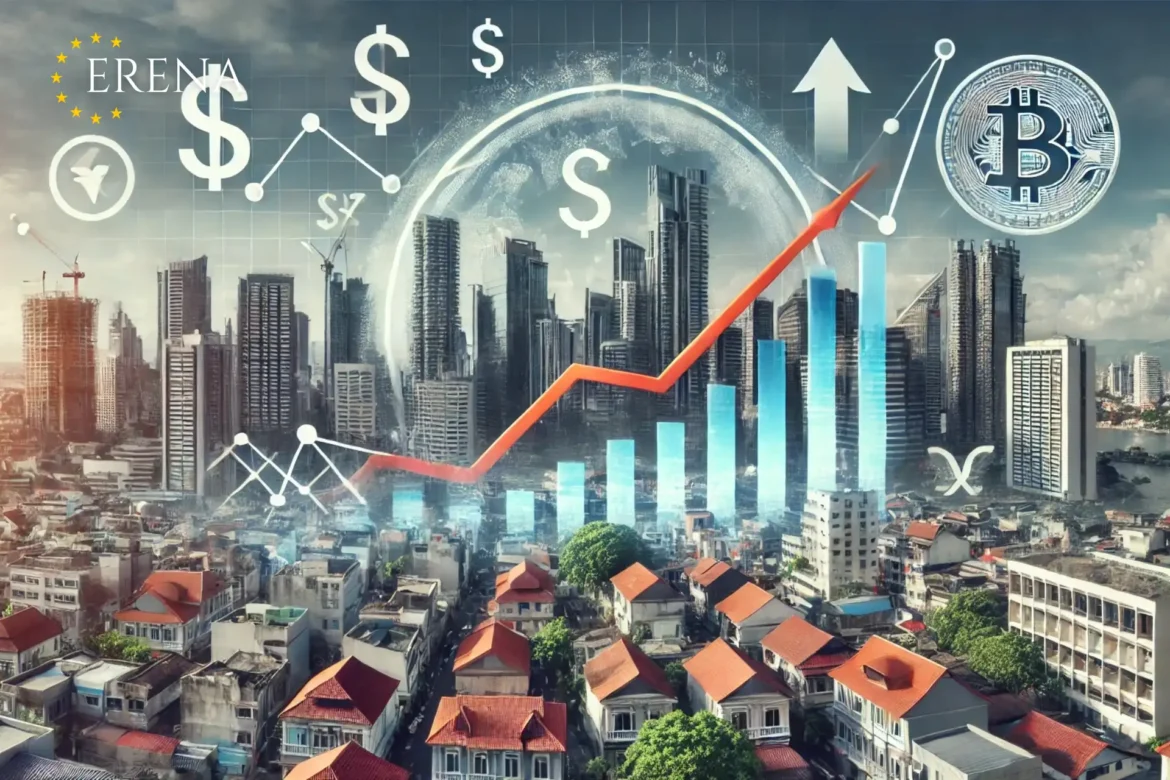The homeownership rate, representing the percentage of a country’s population that owns their homes, is a significant indicator of socio-economic development. It profoundly impacts a nation’s macroeconomy by influencing economic stability, consumption levels, investment trends, employment, and social sustainability. This article delves into how homeownership affects macroeconomic development and highlights the key factors at play.
1. Economic Stability and the Role of Homeowners
A high homeownership rate is often associated with greater economic stability due to several reasons:
• Population Stability: Homeowners are less likely to move compared to renters, fostering stronger local communities and reducing workforce mobility.
• Resilience to Economic Crises: Homeowners tend to hold onto their properties during periods of economic instability, which helps mitigate fluctuations in the real estate market.
• Financial Responsibility: Homeownership requires long-term financial planning and discipline, contributing to overall economic stability.
2. Impact on Consumption and Economic Growth
Homeownership significantly stimulates consumption, playing a critical role in a country’s economic growth:
• Wealth Effect: Increases in property value create a sense of financial security among homeowners, encouraging higher spending.
• Home Improvement and Upgrades: Homeowners frequently invest in renovations, benefiting industries such as construction, furniture production, and home appliances.
• Credit Accessibility: Property ownership often enables homeowners to access credit by using their homes as collateral.
3. Role in Investments and the Construction Industry
A high homeownership rate drives growth in the construction sector and attracts investments:
• Job Creation: Demand for new housing boosts construction activity, generating employment across related sectors.
• Infrastructure Investments: Areas with high homeownership often see improved infrastructure, including better roads, utilities, and public services.
• Capital Attraction: Real estate is considered a stable asset, drawing private and institutional investors.
4. Social Stability and Well-being
Homeownership contributes to social stability in numerous ways:
• Improved Living Standards: Homeowners often enjoy better living conditions, positively impacting their health and overall life satisfaction.
• Community Engagement: Homeowners are more likely to participate in community activities and invest in neighborhood improvements.
• Poverty Reduction: For many families, owning a home provides financial security, helping them avoid rental expenses and build wealth.
5. Addressing Inequality
Homeownership influences socio-economic and wealth inequality:
• Capital Accumulation: Owning property enables families to build assets, narrowing the wealth gap between different social groups.
• Supporting Vulnerable Groups: Government programs such as subsidies or tax incentives for first-time buyers help low-income families become homeowners, reducing poverty levels.
6. Impact on Fiscal Policy
Homeownership plays a pivotal role in fiscal policy and public finance:
• Property Taxes: Homeowners contribute to government revenues through property taxes, a crucial funding source for local and regional budgets.
• Stimulus Measures: Programs providing incentives for homebuyers, such as tax deductions or subsidies, drive demand in the housing market.
• Reduced Social Spending: An increased homeownership rate reduces the need for government expenditure on rental assistance programs for low-income families.
7. Potential Risks and Challenges
Despite its advantages, a high homeownership rate can pose certain risks to the economy:
• Financial Vulnerability: Homeowners are exposed to risks associated with fluctuations in property values and mortgage interest rates.
• Reduced Mobility: Owning property can make individuals less willing to relocate, potentially hindering labor market adaptability.
• Market Overheating: Excessive demand for housing may drive up property prices, reducing affordability for broader segments of the population.
8. International Experiences
Different countries illustrate how homeownership rates impact macroeconomic development:
• United States: A high homeownership rate fuels consumer spending but increases vulnerability to mortgage-related crises, such as the 2008 financial crisis.
• Germany: A low homeownership rate (around 50%) ensures a stable real estate market and high labor market mobility.
• Nordic Countries: These nations strike a balance between renting and owning, minimizing market overheating and ensuring housing affordability.
9. Optimization Strategies
To maximize the positive impact of homeownership on macroeconomic development, a balanced approach is essential:
• Balancing Renting and Owning: Ensuring equal opportunities for renters and homeowners promotes market stability.
• Investing in Affordable Housing: Expanding the availability of affordable homes allows more families to enter the housing market.
• Promoting Financial Literacy: Educating the population on financial management helps minimize risks associated with mortgages and property ownership.
Conclusion
The homeownership rate plays a crucial role in macroeconomic development, affecting stability, investment, consumption, and social well-being. However, maximizing its benefits requires addressing potential risks and tailoring housing policies to the country’s unique economic conditions. Sustainable housing market development should prioritize affordability, balance, and social equity, driving economic growth and improving citizens’ quality of life.
How Does the Homeownership Rate Impact a Country’s Macroeconomic Development?
690

